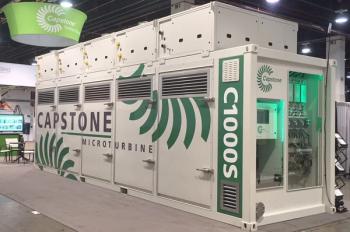
One shaft or two? Can ya dig it?
Was the world a better place when Samuel L. Jackson starred in the remake of the 70’s classic Shaft? Or should Hollywood have left it alone — one solitary Shaft for all time, starring Richard Roundtree in the title role, strutting through the mean streets of Harlem to the sound of that Oscar and Grammy winning title track by the late great Isaac Hayes?
In other words, are two Shafts better than one? That’s the subject of our cover story. We dig into the reasons why two (or more) shafts are preferred to one for combined cycle gas turbines in certain locales. Singles dominate in Europe while multi-shaft units rule in North America.
There are examples of single-shaft combined cycle plants around in the U.S. But not that many. The vast majority are multi-shaft. By contrast, Europe (and other parts of the world) seems to find single-shaft configurations more attractive. The cover story delves into the pros and cons of each arrangement and suggests that the grip of the multi shaft may soon loosen in the U.S. As turbines get larger, operators will have greater choice and it may well be the case that they opt for a single shaft under certain conditions.
Aeroderivatives celebrated
We made our annual sojourn to the Western Turbine Users Inc. (WTUI) conference where all things GE aeroderivative are celebrated, as well as dissected, discussed, defended, deconstructed, displayed and demonstrated. Here are a few facts about some of these models:
The LMS100 has accumulated around 175,000 operating hours with a high time unit in Argentina at more than 20,000 hours which runs in base load most of the time. The total LMS100 starts worldwide stands at almost 25,000 with 28 units in commercial operation at the end of 2012. Most are simple cycle, but five LMS100s are running in combined-cycle mode.
The LM2500 has 1,647 engines out there, with almost 68 million operating hours. Its high-time engine has recorded close to 240,000 hours.
The LM5000 fleet numbers are as follows: 102 engines operating over its lifetime (86 in service and 51 currently operating) with more than 7,600,000 hours of combined action and a high-time engine closing in on the 200,000 hour mark.
Some 1,075 LM6000 turbines have been commissioned over its lifetime, with 975 in service and 791 in current operation. The combined operating hours stand at close to 26 million and its high-time engine has been running for more than 135,000 hours.
Our WTUI article provides plenty of best practices for the operation and maintenance of GE aeroderivatives. The LMS100, in particular, comes under the microscope.
What else is inside?
Further coverage concerns the Middle East Turbomachinery Symposium in Qatar, an insightful piece on compressor maintenance and a breakdown of life management issues affecting turbine rotors.
Our departments also serve up an excellent analysis of the gas turbine marketplace, a dissertation on axial alignment and a Myth Busters exploration of how realistic it is to assume your OEM will be around for the long haul.
And in the next issue, you can expect to find out what’s new from a host of events including LNG 17, Offshore Technology, PowerGen EU and the ASME International Gas Turbine Institute’s Turbo Expo.
Newsletter
Power your knowledge with the latest in turbine technology, engineering advances, and energy solutions—subscribe to Turbomachinery International today.





